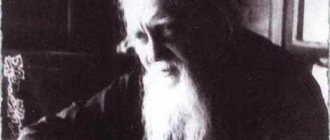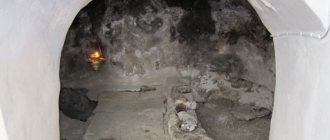Icon of Ignatius Brianchaninov
The name of Saint Ignatius Brianchaninov is widely known throughout the world. He is famous for the creation of spiritual works aimed at preserving and maintaining Orthodox traditions and culture in general.
The future saint was born in 1807, into a noble family that adhered to the Orthodox faith and sacredly observed all the instructions of the church. Since childhood, Ignatius Brianchaninov was different from his peers and was not a follower of the influence of Western culture. Already at the age of 24, he became a monk, and then the abbot of the St. Sergius Monastery. Many famous people listened to his advice in sermons. Among them were outstanding writers N.V. Gogol and F.M. Dostoevsky.
History of the icon
Ignatius Brianchaninov chose the path of serving God and began his ascetic life under the mentorship of the future Optina elder, Father Leonid. Ignatius lived in an era when the influence of new trends from the West corrupted the minds and souls of ordinary people. Being a superbly educated young man with an extraordinary mind and brilliant abilities, he began to fight against the negative influence on the minds of people. His works helped many to take a sober look at things, separating the truth from superficial gloss and lies.
In 1861, Elder Ignatius asked to retire and went to the Nikolo-Babaevsky Monastery. Here the saint spent a solitary life and wrote many immortal works. He rested on the Sunday of the Myrrh-Bearing Women in 1867.
Where is the icon of Ignatius Brianchaninov located?
Icons can be found in many churches in Russia. You can venerate the shrine:
- in the St. Alexievsky Convent of the city of Saratov;
- in the Vvedensky Tolga Monastery in the city of Yaroslavl;
- in the iconostasis of the Intercession Church in Yasenevo, Moscow;
- in the Church of Michael the Archangel in Krymsk, Krasnodar region;
- in the Cathedral of St. Sergius of Radonezh of the Trinity-Sergius Primorsky Hermitage, St. Petersburg.
How does the holy image help?
They pray before the image to receive instruction and strengthen faith. Saint Ignatius is the patron saint of young talents and helps to choose the right path in life, to apply their knowledge and skills. Many Orthodox Christians resort to prayers for repentance and forgiveness of sins, asking the elder to calm down his pride and not succumb to provocations that corrupt the mind and soul.
Description of the icon
Ignatius Brianchaninov is depicted waist-deep in bishop's vestments (mantle, hood and cassock). His hands are folded in a blessing gesture. On some icons he is depicted with the Holy Scriptures, a symbol of wisdom and faith in the Lord.
Days of celebration icons
On May 13, the Holy Church celebrates the memory of the great preacher, outstanding spiritual writer and theologian, whose contribution to the spiritual treasury of Orthodoxy is great and priceless.
Prayer before the icon
“Great saint of God, Saint Ignatius! With humility we turn to you with prayerful words. Hear our requests, coming from the very soul and heart. Ask our Lord Almighty for our physical and mental health, help us find the strength of faith and do not allow us to deviate from the true path. Grant our children a sharp mind and help them choose activities according to their intelligence and abilities, protect them from harmful influences. Amen".
The icon of Ignatius Brianchaninov will be a wonderful addition to your home iconostasis, and daily prayers in front of the holy image will help everyone strengthen their faith and resist negativity.
Saint Ignatius (Brianchaninov), Bishop of the Caucasus
Brief life of Saint Ignatius (Brianchaninov)
Saint Ignatius (in the world Dmitry Alexandrovich Brianchaninov) was born on February 6, 1807 in his father’s family estate, the village of Pokrovskoye, Vologda province.
The mother gave birth to Dmitry after prolonged infertility, through fervent prayer and travel to the surrounding holy places. The boy spent his childhood in the solitude of rural life; From an early age he was unconsciously drawn to the monastic life. With age, his religious mood became more and more noticeable: it manifested itself in a special disposition to prayer and reading spiritual books. Dmitry studied excellently and remained the first student in his class until he left school. His abilities were very versatile - not only in science, but also in drawing and music. Family connections brought him to the house of the President of the Academy of Arts A.N. Venison; here at literary evenings he became a favorite reader and soon met A. Pushkin, K. Batyushkov, N. Gnedich, I. Krylov. But in the noise and bustle of metropolitan life, Dmitry did not betray his spiritual aspirations. In search of “eternal property for eternal man,” he gradually came to a disappointing conclusion: the significance of science is limited to the earthly needs of man and the limits of his life.
Just as zealously as he studied science, Dmitry takes up the study of ancient and modern philosophy, trying to calm his spiritual languor, but this time he does not find a solution to the most important question about the Truth and the meaning of life. The study of Holy Scripture was the next step, and it convinced him that, left to the arbitrary interpretation of an individual, Scripture cannot be a sufficient criterion of true faith and deceives with false teachings. And then Dmitry turned to the study of the Orthodox faith according to the writings of the holy fathers, whose holiness, as well as the wonderful and majestic agreement, became for him a guarantee of their fidelity.
Dmitry Brianchaninov attends services at the Alexander Nevsky Lavra and there he finds true mentors who understand his spiritual needs. The final revolution in life was made by meeting Elder Leonid (later Hieromonk Leo of Optina). Dmitry Brianchaninov leaves the splendor and wealth of aristocratic life and, causing the deepest bewilderment of the “society” and the discontent of his parents, resigns in 1827. Having served as a novice in several monasteries, he took monastic vows with the name Ignatius in the secluded Glushitsky Dionysian Monastery.
In January 1832, Hieromonk Ignatius was appointed builder of the Pelshemsky Lopotov Monastery in the Vologda province, and in 1833 he was elevated to the rank of abbot of this monastery. Soon Emperor Nicholas I summons Ignatius to St. Petersburg; on the highest recommendation and by order of the Holy Synod, he was awarded the title of archimandrite and appointed rector of the Sergius Hermitage.
Having lived in the Sergius Hermitage for 24 years, Archimandrite Ignatius brought it to a flourishing state. On October 27, 1857, he was consecrated Bishop of the Caucasus and Black Sea. The following year, Vladyka arrived in Stavropol, where new great labors lay ahead of him, but the serious illness that befell him, smallpox, prevented them. The Right Reverend decided to ask for retirement and in 1861 settled in the Nikolo-Babaevsky Monastery. Here, free from official duties, he devoted all his time until the end of his life († 1867) to working on spiritual works.
The name of St. Ignatius Brianchaninov, Bishop of Stavropol and the Caucasus, shines in the annals of the Church and Russia with the bright light of grace-filled chosenness. A strict adherent of the ascetic tradition, an outstanding scientist, ascetic, archpastor, peacemaker, a man of the highest spirituality and culture, he is known to the entire civilized world as the creator of immortal spiritual works, a talented administrator, a zealous guardian of Orthodox traditions and culture, as one of the most authoritative leaders of man on the path to eternal life.
Complete Life of Saint Ignatius (Brianchaninov)
Saint Ignatius (in Holy Baptism Demetrius) was born on February 5, 1807 in the village of Pokrovskoye, Gryazovets district, Vologda province and belonged to the old noble family of the Brianchaninovs. Its ancestor was the boyar Mikhail Brenko, squire of the Grand Duke of Moscow Dimitri Ioannovich Donskoy. Chronicles report that Mikhail Brenko was the same warrior who, in the clothes of the Grand Duke and under the princely banner, heroically died in the battle with the Tatars on the Kulikovo Field.
The father of the future saint, Alexander Semenovich Brianchaninov, preserved good old customs in his family. He was a faithful son of the Orthodox Church and a zealous parishioner of the church he built in the village of Intercession. Bishop Ignatius's mother was an educated, intelligent woman. Having married very early, she devoted her life entirely to her family.
All the Bryanchaninov children received an excellent home upbringing and education. Dimitri's teachers and mentors were amazed at his brilliant and versatile abilities, which were revealed at a very early age. When the young man was 15 years old, his father took him to distant St. Petersburg and sent him to the Military Engineering School. The future planned by the parents did not at all correspond to Dimitri’s moods; He had already told his father that he wanted to “become a monk,” but the father dismissed this unexpected and unpleasant desire of his son as an inappropriate joke.
The excellent preparation and exceptional abilities of the young Brianchaninov were already evident during the entrance exams to the School: he was accepted first in the competition (out of 130 examined for 30 vacancies) and was immediately assigned to the second class. The name of the talented young man became famous in the royal palace. Throughout his stay at the school, the future saint continued to amaze his mentors with his brilliant successes in the sciences and was the first on the list to graduate from a full course of science in 1826.
At the school, Brianchaninov became the head of a circle of admirers of “holiness and honor.” His rare mental abilities and moral qualities attracted professors and school teachers and fellow students to him. He became famous throughout St. Petersburg. Emperor Nicholas I treated him with special fatherly attention and love; Taking an active part in the life of the future saint, he repeatedly talked with the young man in the presence of the empress and children.
Origin, upbringing and family ties opened the doors of the most aristocratic houses in the capital for him. During his years of study, Dimitri Brianchaninov was a welcome guest in many high society houses; he was considered one of the best readers and reciters in the house of the President of the Academy of Arts A.N. Olenin (his literary evenings were attended, among others, by A.S. Pushkin, I.A. Krylov, K.N. Batyushkov, N.I. Gnedich). Already at this time, the extraordinary poetic talents of St. Ignatius were revealed, which subsequently found expression in his ascetic works and gave many of them a special lyrical flavor. The literary form of many of his works indicates that their author studied Russian literature in the era of Karamzin and Zhukovsky and subsequently expressed his thoughts in beautiful literary Russian.
Even then, Saint Ignatius was sharply different from the world around him. There was no blind admiration for the West in him, he was not carried away by the corrupting influence of time and the lures of secular pleasures. Subsequently, when at the age of 24 D.A. Brianchaninov became a monk, and soon an archimandrite, rector of the capital's St. Sergius Monastery, dean of the monasteries of the St. Petersburg diocese, he became known throughout Russia. He was well known and appreciated by the leading member of the Holy Synod, Metropolitan of Moscow Filaret (Drozdov). Many outstanding people of Russia sought acquaintance with Archimandrite Ignatius, his advice and instructions. Among them N.V. Gogol, F.M. Dostoevsky, A.A. Pleshcheev, Prince Golitsyn, Prince A.M. Gorchakov, Princess Orlova-Chesmenskaya, hero of the Crimean War, naval commander Admiral Nakhimov. Admired by the way of life and work of St. Ignatius, the famous Russian writer N.S. Leskov dedicated his story “Unmercenary Engineers” to him.
Everything about the future saint captivated his contemporaries: his majestic appearance, nobility, special spirituality, sedateness and prudence. He spiritually nourished his large flock, promoted the moral perfection of people who sought God, and revealed the beauty and greatness of Holy Orthodoxy. Many-sided experience, a special gift for looking at everything spiritually, deep insight, constant and accurate self-observation made him very skillful in treating spiritual and mental illnesses. This is whose prayerful help modern patients should resort to, and not to psychics and sorcerers, charlatans and “witch doctors.”
Sensitive to any falsehood, Saint Ignatius noted with bitterness that the object of depiction of secular art is, first of all, evil. He was sharply critical of literary works that glorified the so-called “superfluous people”, “heroes” who do evil out of boredom, like Lermontov’s Pechorin and Pushkin’s Onegin. Considering that such literature causes serious harm to the inexperienced souls of reading youth, the saint wrote in 1847 for mass publication a sacred story about the Old Testament biblical hero - the righteous Joseph, the image of purity and chastity. In the preface to the story, he wrote: “We wish that many of Pechorin’s followers would turn into Joseph’s followers.”
By the time Archimandrite Ignatius was appointed rector, the Trinity-Sergius Hermitage, located on the shores of the Gulf of Finland near St. Petersburg, had fallen into severe desolation. The temple and cells fell into extreme disrepair. The small brethren (15 people) were not distinguished by strict behavior. The twenty-seven-year-old archimandrite had to rebuild everything from scratch. The monastery was built up and decorated. The worship performed here became exemplary. Monastic melodies were the subject of special care of Archimandrite Ignatius; he took care of the preservation of ancient church melodies and their harmonization. Famous church composer Fr. Pyotr Turchaninov, who lived from 1836 to 1841 in Strelna, next to the Trinity-Sergius Hermitage, conducted at the request of Fr. Ignatius studied with the monastery choir and wrote several of his best works for it. M.I. Glinka, who enthusiastically studied ancient church melodies in the last years of his life, also wrote several chants for this choir. The Lord was pleased that His chosen one would also serve the Holy Church in the rank of bishop, ruling one of the new and most unique dioceses of Russia. It was the Caucasian and Black Sea diocese with a see in Stavropol, founded in 1843.
The episcopal consecration of Archimandrite Ignatius took place in St. Petersburg, in the Kazan Cathedral, on October 27, 1857. Having said goodbye to the brethren of the Trinity-Sergius Hermitage, brought into a flourishing state by his labors, Bishop Ignatius set off on a long journey to the Caucasus. This path ran through Moscow, Kursk and Kharkov (railway connections were then only between St. Petersburg and Moscow, then it was necessary to travel on horseback).
His Grace Ignatius arrived in the cathedral city of Stavropol on January 4, 1858. Civil Governor P.A. Brianchaninov (the saint’s brother, who later followed him to the Nikolo-Babaevsky monastery and took monastic vows there with the name Paul), together with the mayor, the clergy, and the people of God, solemnly greeted the new Caucasian archpastor at the entrance to the city. The first words spoken by the ruler on Stavropol soil were: “Peace to this city.” With these words, the bishop indicated that he arrived on the long-suffering Caucasian land as a peacemaker, with the desire to extinguish the fire of the Caucasian War and pacify the world on the fire-breathing land of the Caucasus, where the saint was to stay from the beginning of 1858 until the autumn of 1861.
Vladyka Ignatius was the third in order bishop of the Caucasus and Black Sea. The external conditions of religious life in this newly established huge diocese were extremely different from everything that he had to deal with before his appointment to the Caucasus. The Caucasian War continued, the fertile land was stained with human blood, crying and groaning were heard from everywhere. The multinational and diverse composition of the local population was the reason for the emergence of many such issues of a church-administrative nature, the likes of which were not even imagined by the bishops who managed the well-appointed dioceses in the center of the state.
Despite all the difficulties, Saint Ignatius zealously began to fulfill his archpastoral duties. He saw his most important task in apostolic service to the flock, in pacifying the world in the fire-breathing Caucasus, in strengthening and expanding Holy Orthodoxy here.
Bishop Ignatius zealously cared about both the organization of divine services and the normal relationships between the clergy and the laity. The saint cared about improving the life of the clergy, raising their educational level, and better relationships befitting the clergy. Thanks to this concern, diocesan affairs were soon brought into a prosperous state.
Under Bishop Ignatius Brianchaninov, the Stavropol Theological Seminary, founded in 1846, experienced a period of particularly rapid prosperity, for Saint Ignatius, like no one else, understood the importance of this nursery of spiritual enlightenment for the cause of holy Orthodoxy in the Caucasus and invested all his strength in the construction of the theological school. He personally observed the spiritual growth of the students, moved the seminary to a new spacious building and forever remained in the grateful memory of the teachers and students of the Stavropol Theological Seminary, being its representative at the Throne of God.
The saint’s field of activity was not only the cathedral city of Stavropol. He made detours around the diocese, the borders of which were the shores of the Black, Azov and Caspian seas, the snowy peaks of the main Caucasus ridge and the distant dry Kalmyk steppes. The Caucasian War was going on, and the bishop on the road constantly had a monstrance with him for, perhaps, the last Communion.
While on the Caucasian Mineral Waters, taking advantage of the healing power of the springs of Pyatigorsk, Essentuki, Kislovodsk, Goryachevodsk, Zheleznovodsk, Saint Ignatius Bryanchaninov highly appreciated them and consecrated them. This saintly blessing continues to this day, bringing physical and spiritual healing to all who resort to the help of the springs, for the waters of the springs, in addition to their natural healing properties, also have a special beneficial power that heals ailments of the soul.
On August 23, 1858, after the Divine Liturgy in the Church of Sorrows in Pyatigorsk, in the presence of representatives of civil and military authorities, noble citizens and eminent visitors to the Waters, in front of a huge crowd of ordinary people, the bishop consecrated the newly discovered Lake Proval. After sprinkling the walls of the grotto with holy water, the image of the Sorrowful Mother of God, brought by the procession, was installed in a niche opposite the entrance to it.
His Grace Ignatius attached great importance to the construction of churches of God in the diocese. Through his care, in 1859, the St. John-Marinsky community, founded by the first Bishop of the Caucasus Jeremiah, was transformed into a monastery. In the same monastery in 1861, the Right Reverend Ignatius founded the new Church of the Intercession. Vladyka, together with the provincial architect Voskresensky, himself drew up a design for a temple in the village of Novo-Grigorievskoye, which became the adornment of the diocese. In 1860, Bishop Ignatius issued a charter for the construction of a new temple in Mozdok in honor of the miraculous Iveron Icon of the Mother of God, located in this city and deeply revered in the Caucasus. With the blessing of the saint, in two years (1859–1860) a unique bell tower of the Stavropol Cathedral of the Kazan Icon of the Mother of God was built according to the design of P. Voskresensky, which for many decades served as one of the attractions of the Caucasus.
For a short time - less than four years - His Grace Ignatius ruled the Caucasian diocese, but this time providentially coincided with many important events in the life of the Caucasus. In August 1859, Imam Shamil was captured. In 1860, the Caucasian line was divided into the Kuban and Terek regions. In 1861, the settlement of the Trans-Kuban region began.
With God's help, Bishop Ignatius worthily accomplished the difficult task of governing the huge Caucasian diocese in the conditions of the brutal Caucasian War. Despite military operations and the real danger of being taken hostage or killed, he visited many parishes from Taman to Kizlyar, put the diocesan administration bodies in order, achieved an increase in salaries for the diocesan clergy, introduced solemn worship, organized an excellent bishop's choir, and built a bishop's house. In addition, he preached tirelessly. In relation to the clergy and parishioners, Bishop Ignatius was a true peacemaker - strict with himself, he was lenient towards the infirmities of his neighbors.
A serious illness forced Bishop Ignatius in the summer of 1861 to submit a petition for retirement to the Nikolo-Babaevsky Monastery, where, after the petition was granted, he left on October 13 along with several devoted students.
The value of the writings of Saint Ignatius is invaluable - the living experience of an active ascetic who built his spiritual life on the basis of the Holy Scriptures and the tradition of the Orthodox Church. The theological heritage of Saint Ignatius was received by readers with great love and gratitude.
Interest in the personality and immortal works of Bishop Ignatius does not fade even today. Saint Ignatius Brianchaninov is the best spiritual leader, the best example of how in the whirlpool of life a person can remain faithful to Christ, constantly kindling in his heart the fire of love and devotion to God.
Bishop Ignatius was canonized by the Local Council of the Russian Orthodox Church (Trinity-Sergius Lavra, June 6–9, 1988). His holy relics rest in the Holy Vvedensky Tolga Monastery of the Yaroslavl diocese. A piece of them was brought to Stavropol by His Holiness Patriarch Alexy II of Moscow and All Rus' during the first visit of the Primate of the Russian Orthodox Church to the Caucasus in August 1994.
Crossword “Saint Ignatius (Brianchaninov)” ►
Prayers
Troparion of Saint Ignatius (Brianchaninov), Bishop of the Caucasus and Black Sea
Tone 8
A champion of Orthodoxy, a great worker and teacher of repentance and prayer, a God-inspired adornment to the bishops, glory and praise to the monastics: through your writings you have made us all chaste. Spiritual treasure, Ignatius the Wise God, pray to the Word of Christ God, Whom you bore in your heart, to grant us repentance before the end.
Kontakion of Saint Ignatius (Brianchaninov), Bishop of the Caucasus and Black Sea
voice 8
Even though you followed the path of earthly life, to Saint Ignatius, you constantly saw the laws of eternal existence, teaching your disciples many words about this, which we should also follow, praying holy.
Prayer to Saint Ignatius (Brianchaninov)
O great and wonderful servant of Christ, Holy Hierarch Father Ignatius! Graciously accept our prayers, offered to you with love and gratitude! Hear us, orphaned and helpless, who fall to you with faith and love and your warm intercession for us



